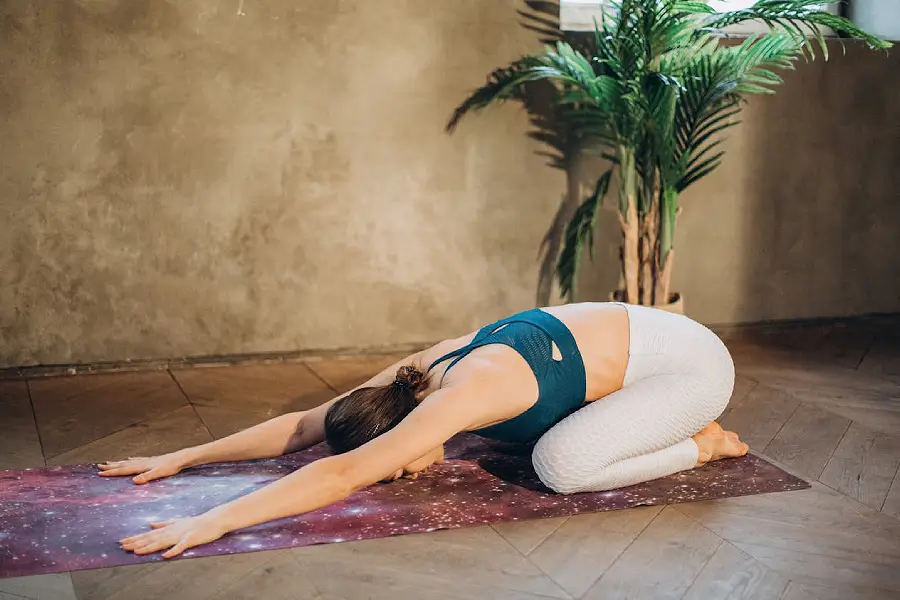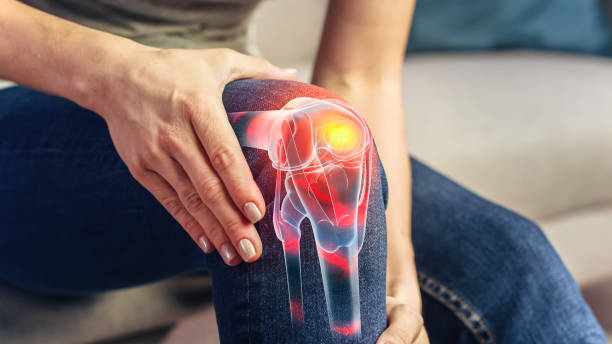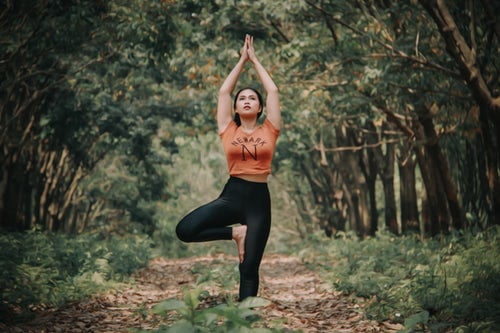Between work, family obligations, and the unexpected, our pace of life is often a source of stress. It is sometimes difficult to take quality time just for yourself and to refocus. And yet, a few minutes of yoga can make a real difference. By regularly practicing anti-stress yoga postures, you easily and easily learn to release physical tension, calm the mind, and find true inner serenity. Through this article, we present five simple and effective evening yoga for relaxation and stress relief.
Table of Contents
1. Child’s pose or Balasana:
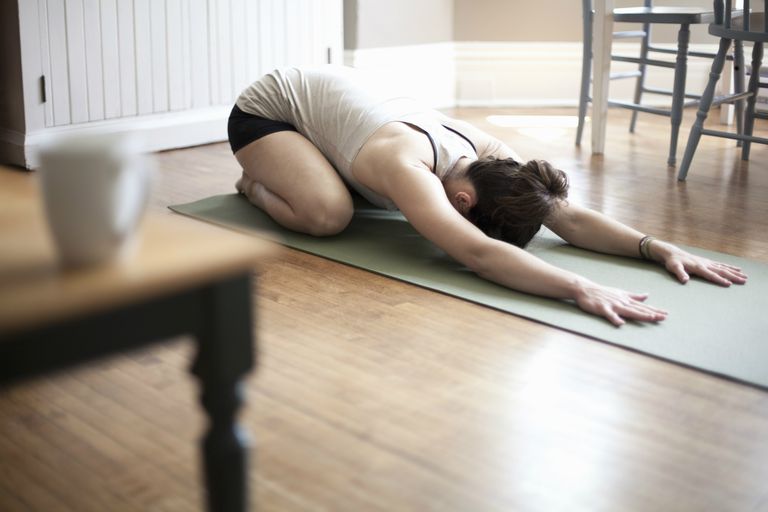
This posture is a must-have in yoga to reduce stress. It helps relax the back, shoulders, and neck, areas that are particularly prone to tension. This is one of the evening yoga for relaxation and stress relief.
Steps:
- Kneel with your big toes touching and your knees hip-width apart.
- Lean forward and let your torso rest between your thighs.
- Extend your arms in front of you, palms facing the floor, or place them alongside your body.
- Breathe deeply, letting your body relax.
2. Cat-Cow Pose or Marjariasana-Bitilasana:
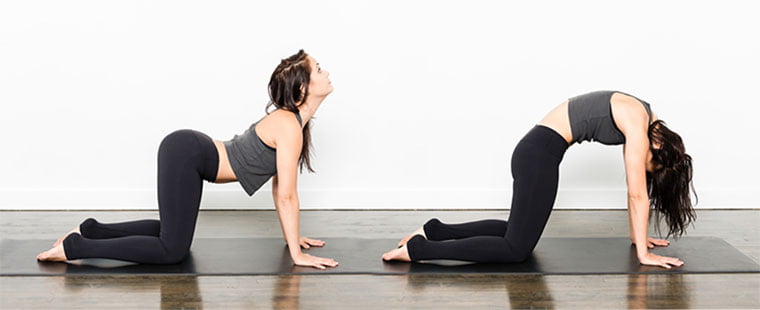
Thanks to its fluid movements, it promotes flexibility in the spine while stimulating energy circulation. It is ideal for releasing back tension and relieving stress! This is one of the evening yoga for relaxation and stress relief.
Steps:
- Get on all fours, knees aligned with the hips, and hands under the shoulders.
- As you inhale, arch your back and imagine your jaw on two rails to move the back of your head.
- As you exhale, round your back like a cat (Marjariasana).
- Repeat these movements while synchronizing your breathing.
3. Paschimottanasana or Forward Bend:
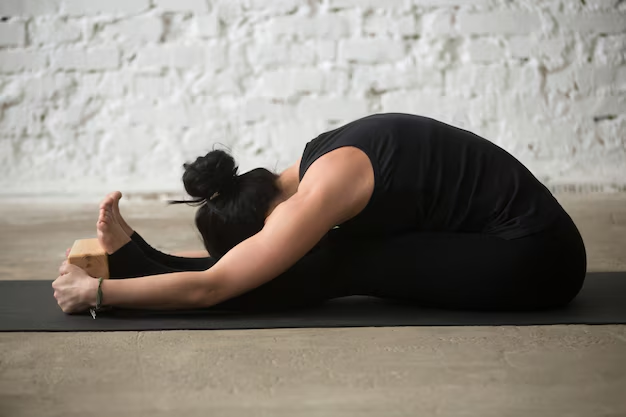
This posture deeply stretches the entire back of the body, promoting relaxation and letting go. It also stimulates the digestive system and helps to calm thoughts. This is one of the evening yoga for relaxation and stress relief.
Steps:
- Sit with your legs straight in front of you.
- As you inhale, lengthen your spine from the lower back.
- As you exhale, lean forward, projecting your heart and ribs toward your thighs. Try to grab your ankles or feet.
- Breathe slowly and relax a little more with each exhale.
4. Legs Against the Wall Pose or Viparita Karani:
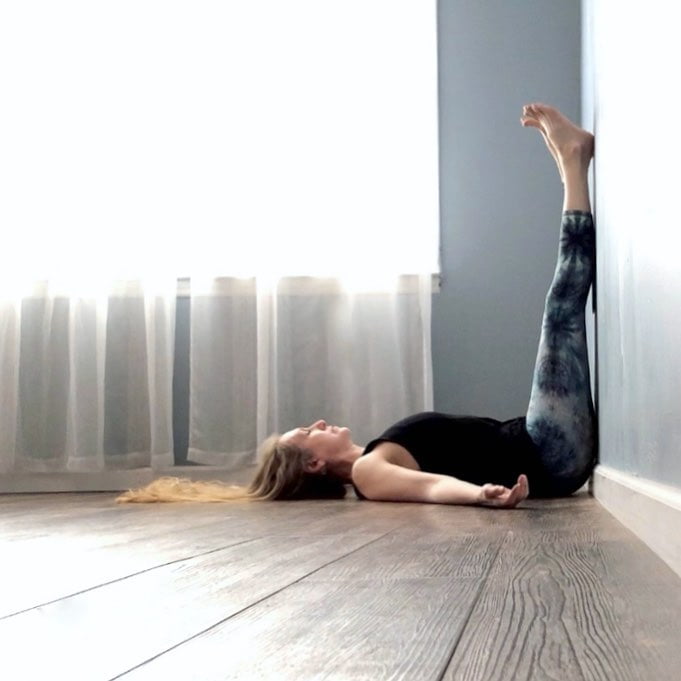
Perfect for finding calm and relieving heavy legs, this posture promotes venous return, thus providing a real anti-stress effect. This is one of the evening yoga for relaxation and stress relief.
Steps:
- Lie down next to a wall and raise your legs. The lower back can be raised by a cushion or a brick.
- Let your arms rest along your body, palms facing the sky.
- Breathe deeply and feel the gradual relaxation set in.
This inverted posture reduces stress and fatigue by reducing tension in the heart and facilitating circulation. It is ideal for a quick relaxation.
5. Corpse Pose or Shavasana:
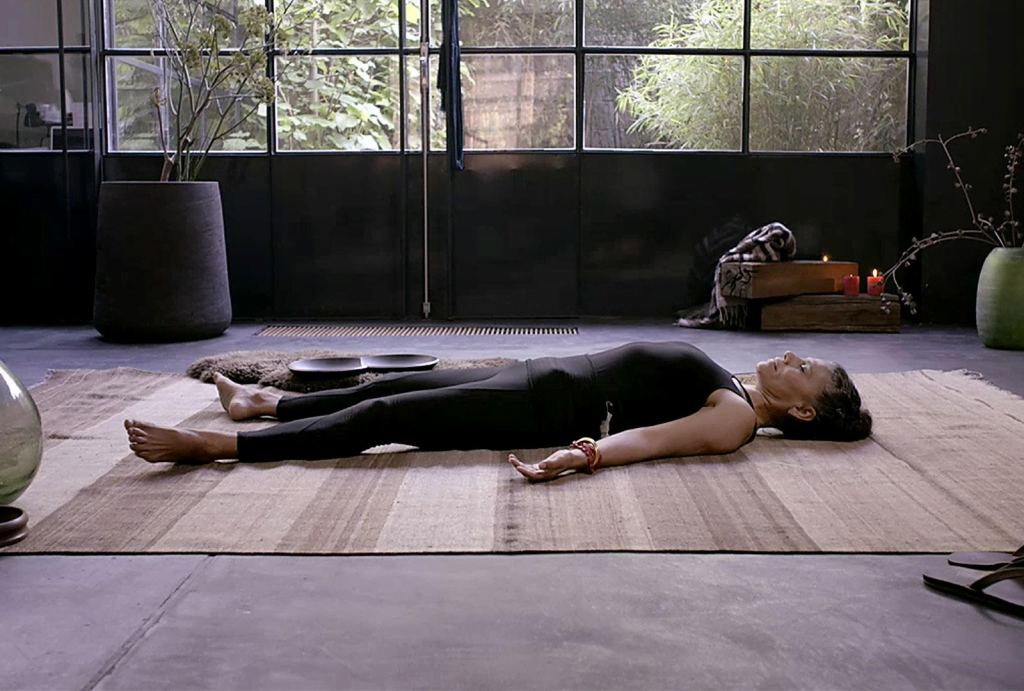
To end your practice gently, Shavasana is the ultimate posture of relaxation. Although simple in appearance, it requires concentration to relax each body muscle fully. This is one of the evening yoga for relaxation and stress relief.
Steps:
- Lie on your back, feet width apart, arms slightly open, palms facing the sky.
- Lengthen your neck, and close your eyes.
- Breathe through your nose, naturally, and effortlessly, trying to relax your entire body on the floor.
6. Shalabhasana or Locust Pose:
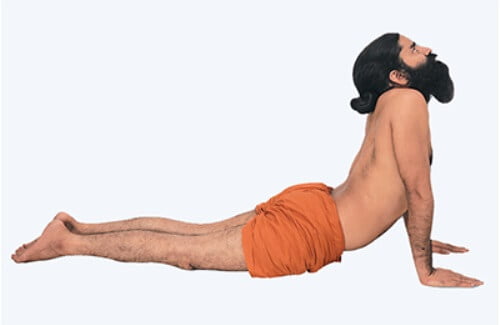
Practicing Shalabhasana daily is beneficial to strengthen the tailbone, neck, chest, and shoulders. Along with stomach problems, it is also a panacea for pain in the thighs and legs. Constipation is also cured by doing this asana.
Steps:
- Inhale and lift your right leg. Keep the leg straight. Take care not to jerk your hip.
- Hold (maintain the position) and keep breathing.
- Exhale and put your right leg down.
- Repeat the process with your left leg. Take 2-3 deep long breaths.
- Make fists of both hands and place them under your thighs.
- Inhale and keep both knees straight, lift both legs up as high as you can with some momentum.
- Hold and maintain the position.
- Exhale, bring both legs down, remove both hands from below, and relax.
- Repeat the whole process again keeping the hands down on the second step.
FAQ:
Q. How does yoga work on stress?
A. Yoga can help reduce stress because it promotes relaxation, which is the natural opposite of stress. Yoga can benefit three aspects of ourselves that are often affected by stress: our body, mind, and breathing. You don’t have to wait until you feel stressed to do yoga, and you shouldn’t!
Q. What type of yoga is best for stress?
A. Several styles of yoga are particularly effective for relaxation. These include restorative yoga, which focuses on long periods of passive postures, and yin yoga, which targets the deep connective tissues. Hatha yoga is another good option, which emphasizes slow movements and deep breathing techniques.

